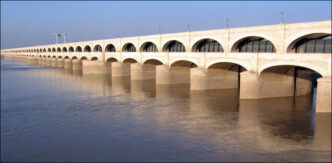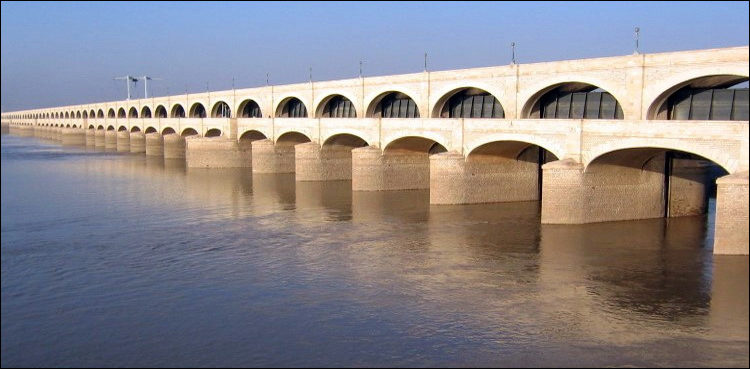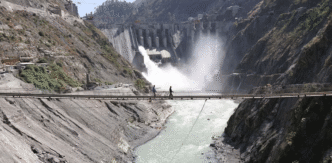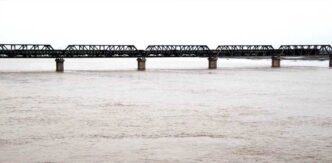Water Level at Punjnad Headworks Surges by Over 144,000 Cusecs in 12 Hours
KARACHI, PAKISTAN – The water level at Punjnad Headworks witnessed a dramatic surge of 144,283 cusecs within 12 hours, exacerbating flood concerns across Punjab and Sindh. The surge, reported on Sunday, reflects intensified inflows from upstream rivers and barrages, compounding challenges in regions already grappling with monsoon-induced flooding .
Key Developments and Current Status
Sharp Increase at Punjnad:
The inflow and outflow at Head Punjnad reached 489,330 cusecs, marking one of the highest volumes in recent days. This follows a rapid rise of 144,283 cusecs within half a day, highlighting the volatility of river flows amid ongoing monsoon activity .
Broader River System Impact:
Indus River: At Guddu Barrage, inflow was recorded at 390,704 cusecs and outflow at 362,070 cusecs, indicating moderate flood conditions. Sukkur Barrage reported inflows of 324,000 cusecs and outflows of 280,050 cusecs, while Kotri Barrage saw a increase of 7,000 cusecs, maintaining low flood status .
Chenab River: A high flood wave reached Chiniot Bridge, with flows at Head Panjnad recorded at 325,000 cusecs . This aligns with earlier warnings of converging surges from the Ravi and Chenab rivers threatening Multan and Muzaffargarh .
Regional Context and Precautions:
Sindh’s Senior Minister Sharjeel Memon confirmed that Tarbela Dam has filled to capacity, while Mangla Dam’s reservoir is at 88% capacity. He urged public cooperation with administration efforts and cautioned against rumors .
The surge at Punjnad occurs alongside receding water levels in parts of Punjab (e.g., Sutlej River), though vulnerabilities persist in low-lying katcha areas near Ali Wahan, where protective dykes are under stress .
Causes and Contributing Factors
Upstream Discharges: Releases from Indian dams, including Pong Dam (99,889 cusecs into Beas River) and Bhakra Dam, have contributed to heightened flows. Although Bhakra’s water level recently dipped slightly, its outflow remains substantial at 80,792 cusecs .
Monsoon Intensity: Heavy rainfall in upstream regions (e.g., Himachal Pradesh) and localized monsoon spells in Punjab have amplified river discharges. The convergence of the Ravi and Chenab rivers near Khanewal has created a “dual threat” of flooding, necessitating controlled breaches to protect urban centers .
Response and Preparedness
Disaster Management: The Provincial Disaster Management Authority (PDMA) in Punjab continues monitoring and relief operations, particularly in Gujrat, where urban flooding required drainage interventions. Authorities project gradual receding of water levels in coming days but remain on high alert .
Transboundary Coordination: Pakistani authorities are leveraging alerts from India’s High Commission on Sutlej River flood risks to preemptively manage surges. The National Disaster Management Authority (NDMA) has emphasized vigilance at major barrages, including Sukkur and Guddu .
Outlook
While water levels in some Punjab rivers (e.g., Sutlej) show signs of receding, the surge at Punjnad underscores persistent volatility. The next 12–48 hours are critical, with convergence points like Head Muhammadwala and Sher Shah Bridge facing near-capacity pressures . Continuous monitoring and coordinated transboundary water management remain essential to mitigate flooding impacts.







